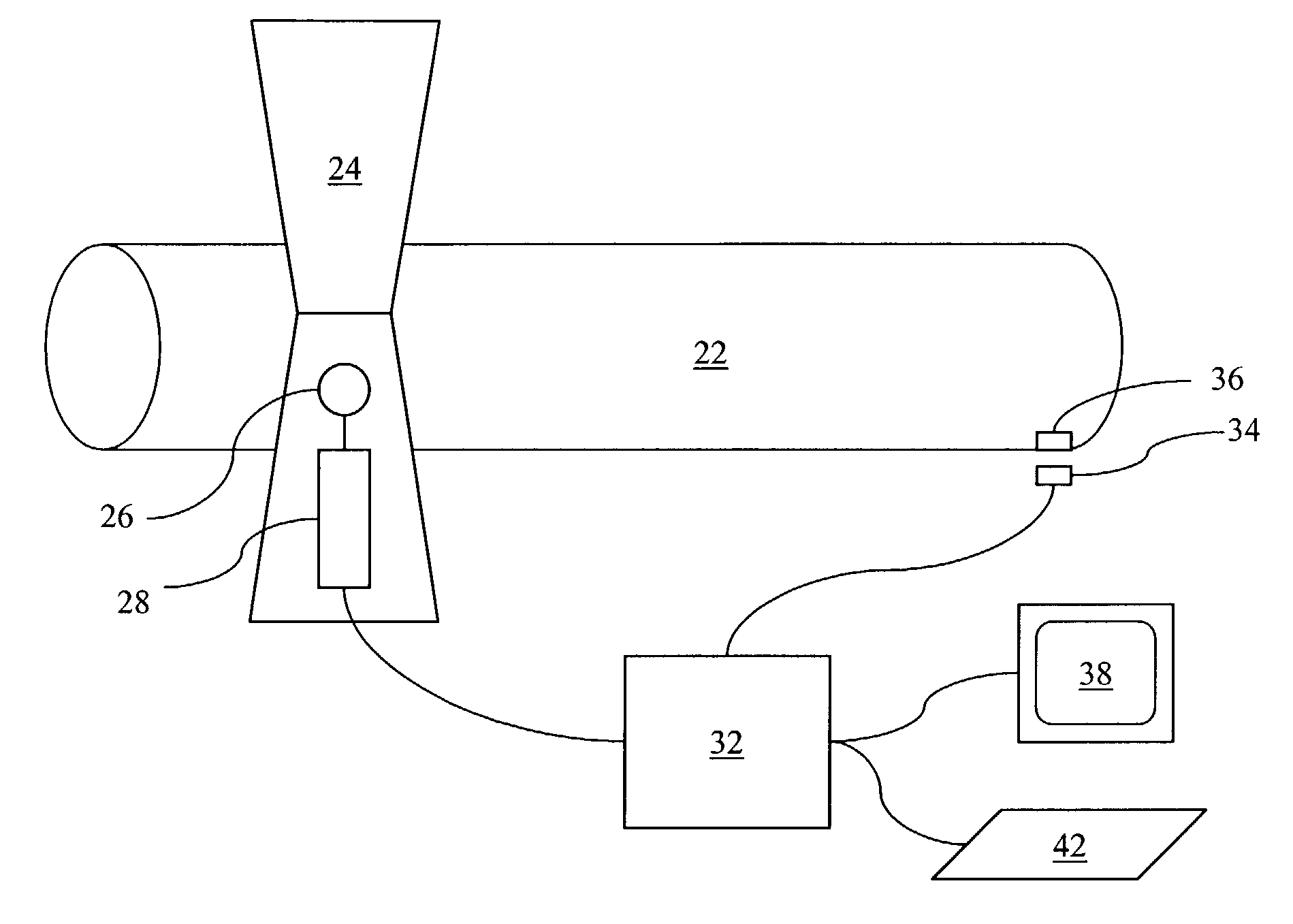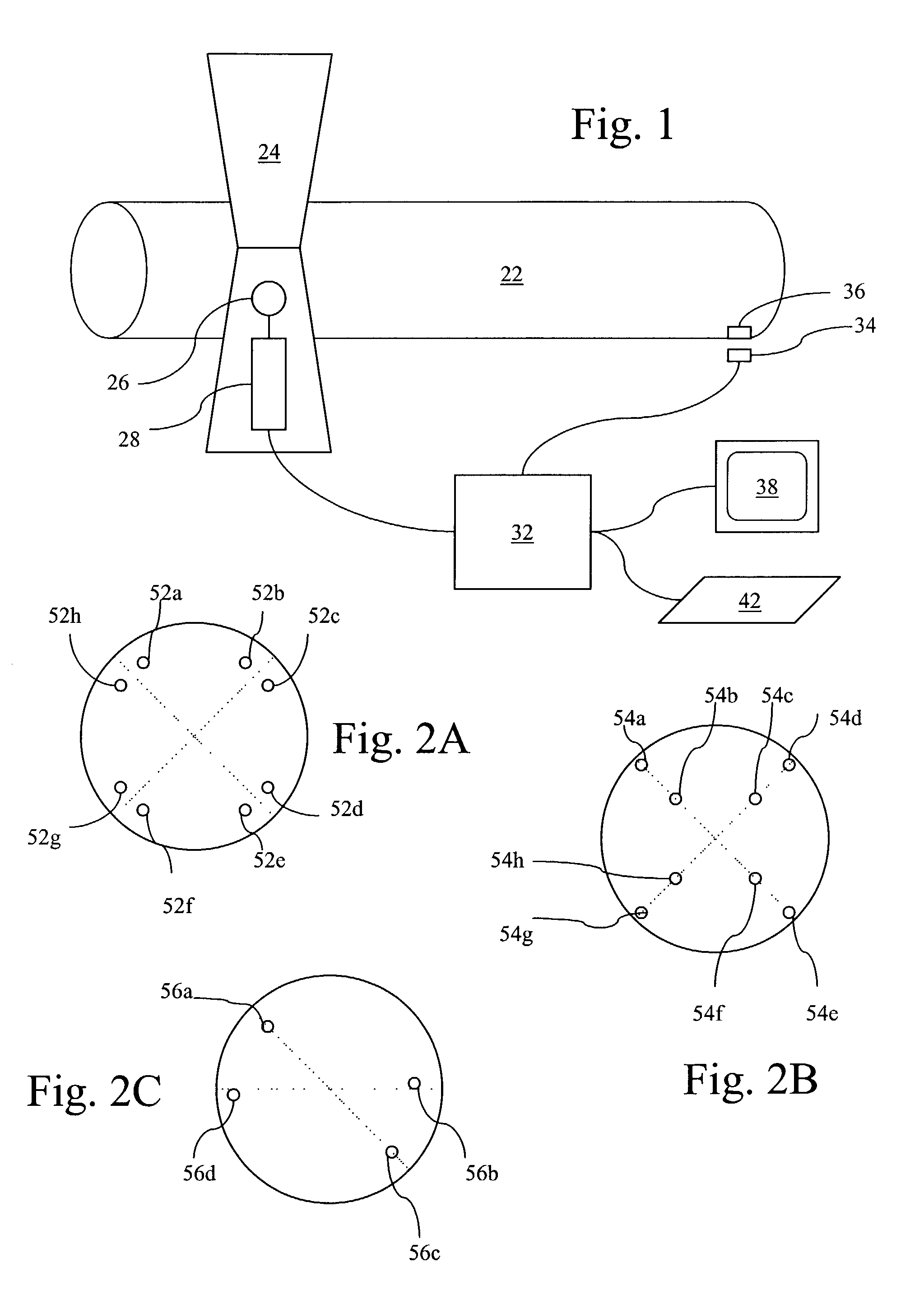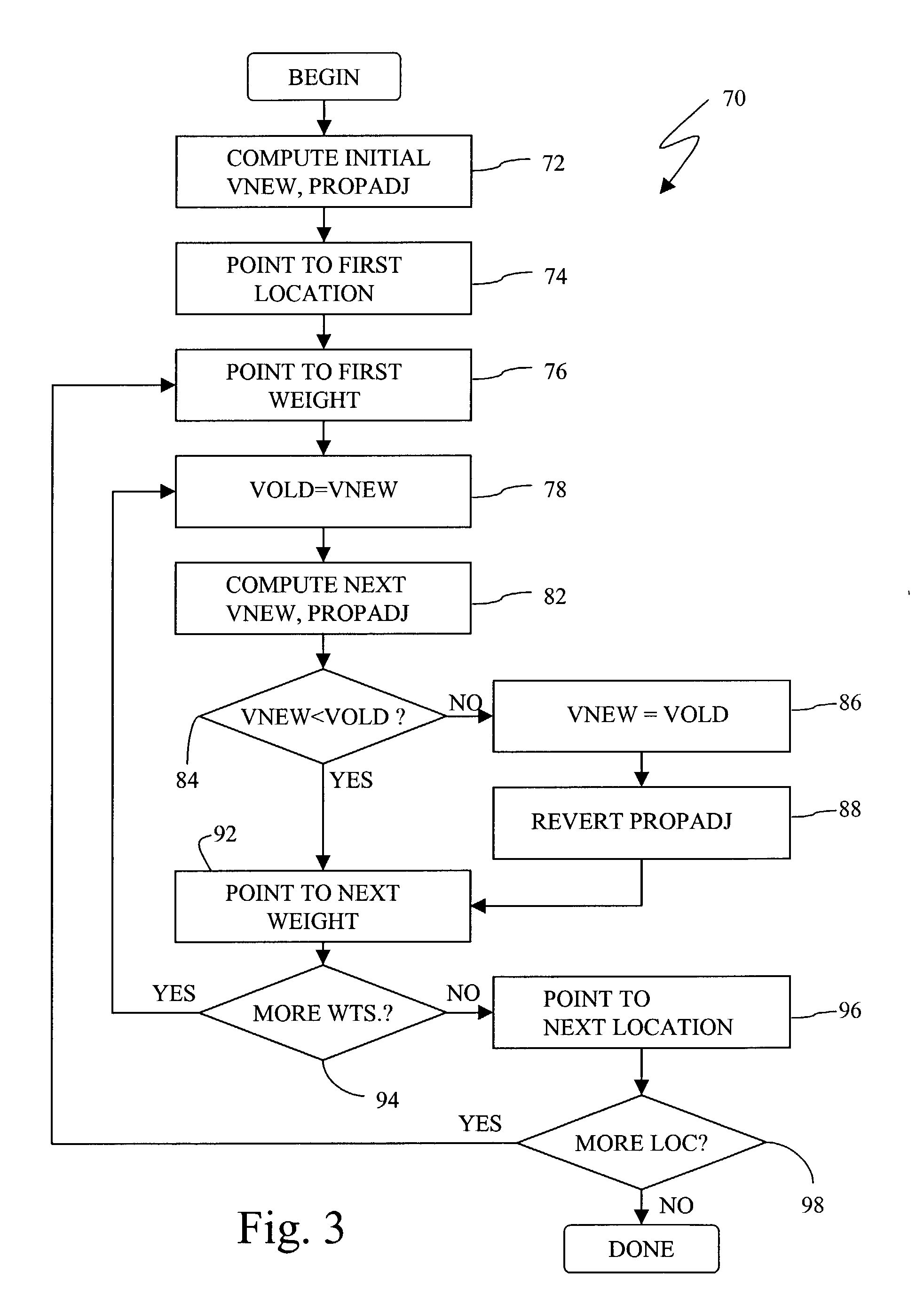Optimal shaft balance using integer programming to handle discrete adjustment
a discrete adjustment and integer programming technology, applied in the field of mechanical system adjustment, can solve the problems of unflyable helicopter flying, unflyable helicopter flying, and unacceptable vibration, and achieve the effect of reducing vibration, reducing vibration, and minimizing the number of weights added
- Summary
- Abstract
- Description
- Claims
- Application Information
AI Technical Summary
Benefits of technology
Problems solved by technology
Method used
Image
Examples
Embodiment Construction
[0016]Referring to FIG. 1, a diagram 20 illustrates a system for measuring and suggesting adjustments to correct vibrations of a rotating shaft 22. The shaft 22 may be part of a larger system such as a mechanical system for a helicopter or another system that includes rotating shafts.
[0017]The shaft 22 may be supported by one or more bearings such as a pillow bearing 24 shown in FIG. 1. Vibration of the shaft 22 may be measured by an accelerometer 26 mounted on the bearing 24. The accelerometer 26 may measure vibration of the shaft 22 (in g's) and provide an electronic output signal proportional to the vibrations experienced by the accelerometer 26. The electronic output signal of the accelerometer 26 may be provided to optional signal conditioning electronics 28 that process / condition the electronic signal and perhaps even digitize the signal. The output of the conditioning electronics 28 may be provided to a processor 32 which receives the signal from the accelerometer 26 and cond...
PUM
 Login to View More
Login to View More Abstract
Description
Claims
Application Information
 Login to View More
Login to View More - R&D
- Intellectual Property
- Life Sciences
- Materials
- Tech Scout
- Unparalleled Data Quality
- Higher Quality Content
- 60% Fewer Hallucinations
Browse by: Latest US Patents, China's latest patents, Technical Efficacy Thesaurus, Application Domain, Technology Topic, Popular Technical Reports.
© 2025 PatSnap. All rights reserved.Legal|Privacy policy|Modern Slavery Act Transparency Statement|Sitemap|About US| Contact US: help@patsnap.com



